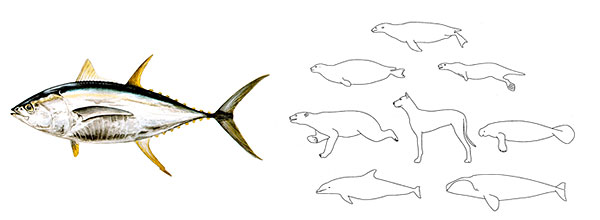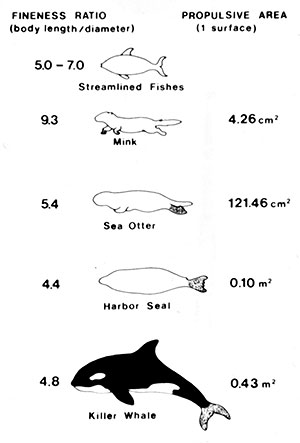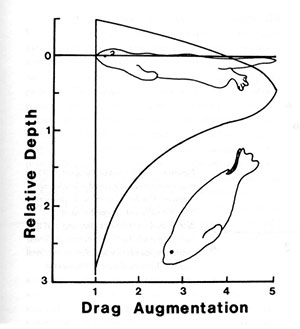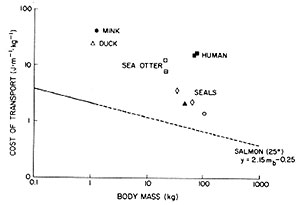- Sweeping motion of the tail while at the surface feeding or grooming; low velocity.
- Paddling at the surface using alternating thrusts and recovery of the hindlimbs while floating on the belly or back; long distance travel at 0.5-1.0 m/sec.
- Submerged swimming using craniocaudal thrusts of the hindlimbs, including bending of the lower spine; average velocity of 1.0 m/sec.
The hydrodynamic drag experienced by marine mammals is reduced by a streamlined body shape and internalized limbs. The better the streamlining, the lower the drag force.

Optimum streamlined shapes with minimum drag have a fineness ratio equal to 4.5. Streamlined fish usually have a fineness ratio from 5 to 7. Semi-aquatic mammals, such as the mink have a fineness ratio of 9.3: sea otters 5.4. More aquatic pinnipeds and cetaceans have fineness ratios of between 4.4 and 4.8, which approximate the ideal shape to minimize drag.

The increased drag experienced by an animal swimming at the surface, results from the additional force generated by the surface wave or wake. Drag force approaches a maximum at the surface and decreases to a minimum at ca. three body diameters below the surface. Consequently, it is easier for an animal to swim below the surface than at the surface.

Hydrodynamic shape, efficient propulsion and subsurface swimming allow marine mammals to swim at very low energetic cost and achieve high speeds.


